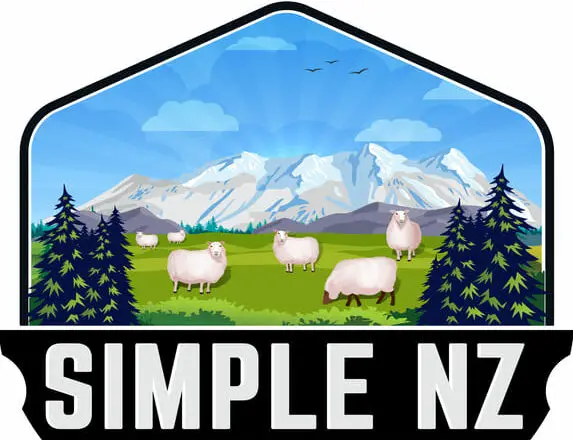
Simple New Zealand


How To Master a Cover Letter for New Zealand [Examples & Tips]

Although you might don’t want to, yet in most cases, you need to include a cover letter when applying for a job in New Zealand. NZ cover letter is similar to other countries; it should show the company why you are the right candidate for the job. Take your time to write a personal and customized letter. Never send the generic one; this can ruin your application from the start.
A cover letter is a monumental part of your job application in New Zealand. A good cover letter should answer the main question, which is why the company should hire you. Additionally, it must provide information on how you can bring value to the company and help them with the challenges. A cover letter should showcase the relevant skills and experience you have.
In most cases, businesses and recruiters in New Zealand will require you to attach a customized cover letter. And it’s a good thing for you. In the end, the cover letter is a claim for the role – it’s your chance to highlight and match your experience against the job description and to clearly state what you can offer your potential employer.
If you are looking for a job in New Zealand, I would highly recommend going through the Job Hunter’s handbook made by Careers.govt.nz.
Table of Contents
Is a cover letter necessary in New Zealand?
Unfortunately, yes, you need to include a customized cover letter when applying for a job in New Zealand. Almost half of the recruiters reject applications without a cover letter. A high-quality, customized cover letter tells the manager you are a dedicated professional. It should be only a page long.
A resume or CV alone can show your achievements and qualifications, but it can’t tell the story and explain why you choose this company in particular. That’s why we need a cover letter. It’s also a great tool to show your personality and motivation. It must show the employer you are an asset to their company.
Are you resigning from your previous job? Read how to write a proper resignation letter .
Resignation Letter in New Zealand (Examples + Template)
Tips and guidance for a winner cover letter.
So what is a cover letter, and why it’s so important for your job application in New Zealand?
- Cover letter is your first point of contact with employers .
- It should fit on one page .
- It needs to explain why you want this job .
- It should relate to your CV .
- It should describe your relevant skills, experience, and accomplishments .
- It should show the evidence that you have researched the company and that you are the right candidate.
If you follow these simple statements, you should already be able to create a decent letter. Yet, if you want more, read this article to the end and follow the advice.
The winning tactic here is focusing on them , not just on you, which will ultimately make you stand out from other applicants
When writing your cover letter, pay attention to the following:
- Do very extensive research about the company. Show it in the cover letter.
- Reflect on the company’s vision.
- Highlight specific achievements and successes that show you can address the challenges the employer is facing.
- Show your personality.
- Prove that you understand the challenges of the company.
- Explain your motivation and fit for the position.
- Presents how your skills and experience as a solution for the company.
- Create a list of job keywords that are mentioned in the job ad. Include them in the cover letter.
- Address the cover letter to the right person, e.g., the hiring manager or recruiter
- Be clear and concise
- Have a structure in the letter – beginning, middle, end
- Use active words to describe your work – accomplished, achieved, led, created, increased, identified
- Finish with a call to action and ask for a meeting.
- Try to be funny
- Send a generic cover letter — customize each one for the specific job.
- Forget your full contact details
- Generic and boring opening paragraph
- Copy-paste from the CV or job ad
- Start every sentence with “I”
- Write more than one page
Looking for a job? Check out the best recruitment agencies in New Zealand .
Best Recruitment Agencies in New Zealand 2024
1. Research about the company and position

Your knowledge about the company you are applying to work for is crucial. You must also know all the essential details about the advertised position and how your skills and experience fit in.
When someone reads your cover letter, they must be sure you are the right candidate for this position and for this company. That’s why you must include as many tailored to the job ad details as possible (yet not too many).
So, look for information on the company, its key products or services, its mission, and anything else that gives you an insight into them. Notice the most important details and mention them in the cover letter where appropriate.
You might want to check out the company’s website, its executives’ Twitter feeds, and LinkedIn profiles.
The culture of the organization is vital to note. This will influence your communication style. For instance, you might be more casual with start-ups or advertising agencies but more formal with banks and large corporations.
2. Show how you can help
A company hires you to solve a problem or to help with challenging tasks they are unable to manage. Point out the things you can do for a company and which potential results it might bring. Or maybe you already were challenged with similar tasks? Mention it in your cover letter!
3. Why are you a perfect fit?
The second paragraph of your cover letter should give a clear idea to the reader why you are the one and that you will satisfy the company’s specific needs.
Here you should match the keywords mentioned in the job ad with your skills and experience. You also must show the hiring manager why you want this job, not just any job. Include all the enthusiasm and passion you have.
Match your skills with a job ad
Highlight the key skills and qualities in the ad, e.g.:
- strong written and verbal communication
- technical skills
- analytical thinking
- team player or teamwork
- problem-solving
- time management
- knowledge of software & tools
- specialized or technical competencies
- high level of computer competency
- ability to work well under pressure
- enthusiasm and initiative
- excellent customer service
Include them in the cover letter with real-life examples.
Connections matter in New Zealand

About 70% of all jobs in New Zealand are so-called hidden. They are simply not advertised because hiring managers seek candidates within the company, their circle of colleagues, and people they know before they post a job ad. For that reason, having connections in New Zealand is very crucial.
You are more likely to be invited to an interview if you know a friend of a friend and they got a reference they you rather than just based on your qualifications and experience.
That might be good news for some and bad news for others. Nonetheless, it’s highly recommended to start networking as soon as you land in New Zealand. Join groups, participate in social and professional events, work on your Linkedin profile, and just be proactive.
And if you are lucky to know someone in the company you are applying to work for, mention it in the first sentence or two of your cover letter.
Don’t forget to include
Your cover letter shouldn’t miss these small but key elements:
Your personal value and personality
While skills and experiences are indeed critical, New Zealanders love human connection. If they find you an interesting and nice person, they are more likely to move forward with your application.
Try to be personal in your cover letter; tell them more unique things about you and your experience. Avoid being general at any cost.
Reflect on your experience that relates to the job ad and company profile. What challenges have you faced, and how did you solve them? You also want to provide evidence of the things you mention by using concrete examples, situations, numbers, and facts. For example:
“During the last quarter, my company was challenged by the supply shortage of …We have had 200% more orders than we can ever fulfill. To solve this problem, I was on the lookout for new suppliers for several weeks; after dozens of selling calls, I finally managed to sign a contract with our best supplier so far. I will never come across them otherwise.”
Your enthusiasm
In many cases, people don’t get hired because they aren’t enthusiastic and convincing enough. So, it’s not the lack of skills; it’s your desire and how you show it. If you make it as if it was your dream job, you are more likely to be invited. Avoid at any cost writing in a manner as you are doing a company a favor by working for them.
Hiring managers even say, “Enthusiasm conveys personality.” Some tips that help you to point out your enthusiasm include:
- Show that you have thought about the job and why you would like to work for them.
- Why is this company so brilliant? What they do the best? How they stand out?
- Mention their reputation, performance, and product.
- Remember, it’s about what you can do for them, not what they can do for you.
NZ cover letter structure
Following the formal structure when piecing together a cover letter is as much as important as its content. So, make sure you stick to New Zealand standards. Here is an example:
Dear [Ms. or Mr. Surname],
- Opening – Explain why you are writing this letter (add an interesting one-liner summarizing why you’re interested in the role and what you’d bring to their business.)
- Explain your interest in the job, show knowledge about the company and position
- Demonstrate your skills and experience related to the job
- Explain why you will fit into this role and which value you will bring to the company
- Sign off and offer them to contact you
Yours sincerely,
Your name – Andrew Black.
Make sure you check your cover letter via Grammarly for spelling and grammar mistakes!
Cover letter introduction
The introduction sentences will determine whether the hiring manager will read on or skip your resume. Start your cover letter in an unconventional way and hold the reader’s interest. Here are some tips for a stellar introduction:
- Highlight your achievements in the industry.
- Display your passion and enthusiasm.
- Mention some names and numbers.
A no-go cover letter introduction looks like this:
In response to your posting for the Digital Marketing Manager position, I would like to express my interest in participating in the recruitment process. As a digital marketing manager with 8+ years of experience, I am optimistic that I would succeed in this role.
Top cover letter example
Since you already know how to write the header, here is only the main part of the cover letter.
” I am writing regarding the Marketing Manager position you currently have open. As a marketer with over 5 years of experience managing small and larger teams, I would love to take a challenge and work for your company. Marketing is my passion, so it’s to achieve monthly goals, generate new leads & sales, and train the team for success.
In my previous role at (company name), I reached not only the set marketing goals but exceeded them by 80% and, in some months, even 120%. Your company (name) already has brilliant strategies in place, you use paid advertising, social media, and outreach, but I would add other channels to ramp up the reach and revenue. I am experienced and knowledgeable in the SEO scene; hence we can explore new opportunities for your business in this area of marketing.
My previous team of marketing assistants was great! I love to work with people and guide them in our current strategies. At the same time, responsibility for people does not make me stressed or scared but ignites my motivation to bring even better results so we can all be proud as a team.
Besides, my Master’s degree in Business taught me fundamental knowledge about organizations, management, strategy, and agility, which I would be happy to apply when working for (company).
It will be great to talk in person one day. You can reach me at 123456789 any time or via email at [email protected] to arrange an interview. Thank you for your consideration, I look forward to hearing from you.
Cover letter for a visa application
Im most cases, Immigration New Zealand, will request a cover or so-called motivational letter together with your visa application. This is generally a less complex document that you would write for the employer.
Your cover letter for a visa should include:
- Reasons why you are moving or visiting New Zealand
- How are you going to support yourself
- Demonstration of how you meet the criteria for the visa
The content of the cover letter will vary depending on the visa type you are applying for. If it’s, for instance, to join a partner in New Zealand, you should include your relationship to them and explain it briefly.
Therefore, your cover letter should target your visa category’s main requirements.
When I was applying for a student visa, my cover letter described why I decided to study in New Zealand and what are my plans after my studies. Immigration New Zealand also mentioned in their requirements that the cover letter must include these details.
Similar Posts

If you came across this article, that means you are quitting or thinking of quitting your job in New Zealand. If it’s the case, you must do it in a legal and most appropriate way. In most cases, a resignation letter is required in New Zealand when resigning from the job. It’s an official document…
![how to address a cover letter nz Salaries in New Zealand vs the UK: Where You Get Paid More? [2024]](https://simplenewzealand.com/wp-content/uploads/2022/11/Depositphotos_508131346_L-768x512.jpg)
Salaries in New Zealand vs the UK: Where You Get Paid More? [2024]
Are you considering working in the UK or New Zealand? Or maybe you are moving from the UK to this remote island in Oceania? In all cases, you will need to get a job to pay the bills. The UK and New Zealand both pay pretty good wages, which can vary significantly depending on the…
![how to address a cover letter nz 25 Best Side Hustles Ideas in New Zealand [2024]](https://simplenewzealand.com/wp-content/uploads/2023/07/wallpaperflare.com_wallpaper-1-1-768x499.jpg)
25 Best Side Hustles Ideas in New Zealand [2024]
Money seems to be never enough, if you want to earn more in addition to your day job, getting a side hustle is a great option. In fact, 12% of all taxpayers in New Zealand have a second job, according to the survey made by Sorted. However, creating a second income doesn’t necessarily mean getting…
![how to address a cover letter nz Salaries in New Zealand vs Australia: Let’s Be Real [2024]](https://simplenewzealand.com/wp-content/uploads/2023/06/pexels-david-peterson-4359064-2-768x689.jpg)
Salaries in New Zealand vs Australia: Let’s Be Real [2024]
Will you earn more in Australia or New Zealand? This is a dilemma for many people, including the Kiwis, who are struggling to save enough money to buy a house while working in New Zealand. Although these countries might appear to be the same to you, they are certainly not. The economic situation, job and…

Working Remotely for An Australian Company in New Zealand: 2024 Guide
Thanks to COVID, we are now able to enjoy greater freedom and work remotely from anywhere. The bitter truth is that New Zealand is a very small market, so if you want to expand your horizons, why not work for our neighbors in Australia? You can work for an Australian company from New Zealand as…

How To Work as a Freelancer in New Zealand: Guide For Locals And Immigrants
If you plan to become a freelancer in New Zealand but don’t know where to start or how to switch, you have landed on the right page. Here, you will learn the step-by-step process of making a living as a freelancer in New Zealand. Residents, NZ citizens and visa holders with open conditions can do…
Scam alert banner
Beware there has recently been an increase in reported recruitment scams currently targeting jobseekers. These scams trick you into handing over your money by offering you a ‘guaranteed’ way to make fast money or a high-paying job for little effort. Click here for more details.

How to Write a Cover Letter: Template & Tips | Hays
How to write a cover letter | hero banner | ub, how to write a cover letter - template & tips new zealand.

Intro + Form | UB
The importance of cover letter, what is a cover letter.
Let’s go back to basics – what is a cover letter? A cover letter acts as a personal introduction in a professional setting. Usually, it’s a separate document that you attach to a job application along with your CV. You should use it to demonstrate your personality and summarise why you are the right person for the job, so the reader can consider the rest of your CV with this set up in mind.
Follow our tips for how to write a cover letter or download our cover letter template.
Why write a cover letter?
The idea for writing cover letters for your resume is simple: it needs to be engaging enough for an employer to read to feel compelled to find out more about your skills and experience in your resume, before (hopefully) calling you in for an interview.
Not all candidates make the effort to write a tailored and personalised cover letter, so by making sure you write a cover letter that answers specifics needs in the job ad, it’ll help separate you from other applicants. In turn, giving you a greater likelihood of being shortlisted for an interview.
Download your Cover Letter template
Enter your details below to download your Cover Letter template:
How to write a cover letter | Video | UB
Cover letter advice.
Recruiters & hiring managers often receive hundreds of applications for each job. You need to start with a great cover letter to gain attention. Learn how with this video from Hays.
Resumes promo menu
Resumes & cover letters.

How to write a resume
How to write a cover letter
CV hacks that work
Make your CV stand out
CV cliches to avoid
Content Block - Cover Letter | UB
How long should a cover letter be , how to write a cover letter | 3rd content block | ub, cover letter format, how to write a cover letter | 4th content block | ub, 1. do your research, 2. address your cover letter to the right person, 3. how to start a cover letter write an attention-grabbing introduction, 4. add evidence of your successes , 5. highlight key skills, 6. sign off professionally, 7. review your cover letter , how to write a cover letter | 5th content block | ub, what not to include in a cover letter, excessive details, repeat your cv, don’t write in the third person, can ai write the perfect cover letter, how to write a cover letter | 6th content block | ub, final tips around how to write a cover letter.
- Keep it succinct and relevant to the job you’re applying for. Your cover letter should not exceed five paragraphs.
- State what your motivation is behind your application.
- Just as you would in your CV, use strong verbs to demonstrate action and accomplishments, such as ‘organise’ or ‘supervise’.
- Optimise the subject line. Also check the job description again, in case the employer asks applicants to include something specific in the subject line.
- If you are applying for a job online rather than email, consider putting your cover letter and resume into the same document so they don’t get separated.
- Remember, our cover letter template is free to download and can be used as another way to capture the attention of a recruiter or hiring manager and encourage them to more closely review your resume. Good luck.
How to write a cover letter | 7th content block | UB
Do i really need a cover letter, how long should a cover letter be, what are some common mistakes people make when writing cover letters, how do i format a cover letter, hays new zealand salary guide 2022-2023 - salary checker | ub.
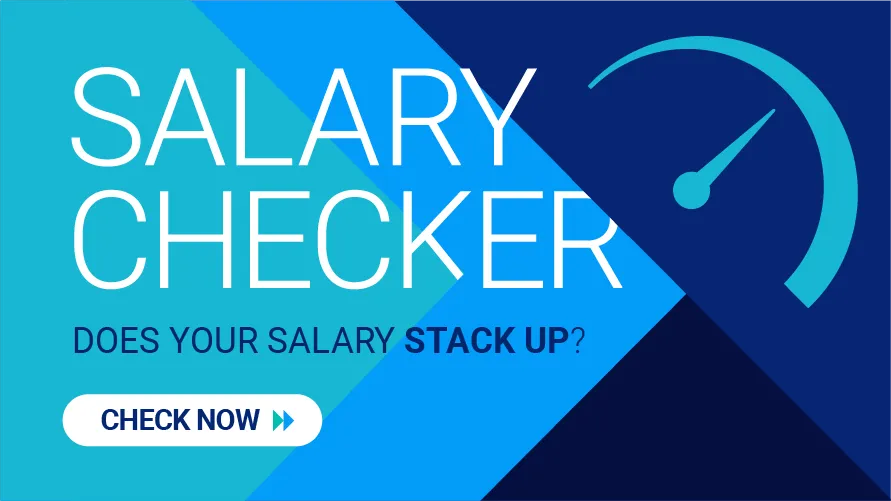
Try our Salary Comparison Tool
The Hays Salary Checker provides you with quick access to salaries for your specific job role in your location. Covering hundreds of jobs in 19 industries and sectors, and further customised geographically by 3 different regions across New Zealand. Our New Zealand salary comparison tool provides instant insights on pay and salary benchmarking for your exact job and location.
Protect your data
This site uses cookies and related technologies for site operation, and analytics as described in our Privacy Policy . You may choose to consent to our use of these technologies, reject non-essential technologies, or further manage your preferences.
- Resume and Cover Letter
- How to Address a Cover Letter...
How to Address a Cover Letter to Recruiter or Hiring Manager
5 min read · Updated on November 24, 2021

Knowing how to effectively address a cover letter makes you a very visible and appealing candidate.
Did you know that the cardinal rule of cover letters is personalization? It impresses a hiring manager or recruiter because it tells them you took time to research the specific information for the letter rather than sending a generic version.
What many people forget, however, is that the greeting or salutation in a cover letter must also be personalized with the hiring professional's first and last name whenever possible.
There are several effective ways to find the hiring manager's name for your greeting — and some acceptable back-up strategies when you can't. Either way, knowing how to address a cover letter effectively can prevent you from ending your hiring chances before they even begin.
When you know the hiring manager's name
More often than not, you'll be given the name of the hiring professional or the manager that you'll work for. Whoever it is, use their full name (first and last name) in the greeting.
If you cannot definitively tell the gender of the hiring person, do not use a gender-based title such as “Mr.” or “Ms.” in the greeting. Instead just use the person's full name.
For example, Alex Johnson could be male or female. To avoid a gender mistake, use Dear Alex Johnson, Hello Alex Johnson, or simply Alex Johnson .
However, professional titles such as “Professor” or “Dr.” are definitely acceptable as a cover letter salutation and should be used as a sign of respect. Be on the lookout for these and other titles to include.
How to find a hiring manager's name for your cover letter
If you're not given the name of the hiring manager, here are some effective ways to discover their name by using:
The job description: Check this document for the hiring manager's name. While it's not generally listed, you never know. If it's not obvious, there's also a trick to quickly discover an email in the job description that might contain the name; while in the document, press Ctrl +F or run Command + F and search for the @ symbol.
An email address: If you discover an email address, it may not have a full name but rather a first initial and last name or just a first name like [email protected] or [email protected] . A Google search combining the person's name as shown in the email and the company name might find you the person's full name.
A LinkedIn post: A name connected to the LinkedIn job posting is probably that of the hiring professional who posted it, so use that name in your greeting.
The supervisor's title: It's more likely that a job description will list who the new hire will report to — such as the director of accounting — without listing a name. In this case, there are several search options:
Search the company's website for listings of staff members by title.
Run an advanced LinkedIn or Google search for all directors of accounting at that specific company.
Check with your network for someone who might know the person's name or search the appropriate professional networking sites.
Contact the company by phone or email. Tell them you're applying for [job title] and want to address your cover letter to the right person.
In the end, this research can be the difference between making a great first impression and getting noticed for the position — or getting totally ignored by the hiring manager.
Acceptable options in lieu of a name
If you try the steps above and come up empty, there are still some alternative greeting options that will put you in a professional light.
The idea is to show that you've read the job description and tailored your greeting based on the company department where the job is located, the hiring manager's title, or the team with which you'll potentially work.
Some good examples include:
Dear Head of Design
Hello IT Department
Dear Accounting Manager
To Company ABC Recruiter/Hiring Professional
Hello Marketing Hiring Team
Dear Customer Support Hiring Group
Dear Human Resources
If you still can't find any specific name or department information, go with “Dear Hiring Manager.” It sounds professional and it's not gender-specific. In fact, a recent survey of over 2000 companies by Saddleback College showed that 40 percent preferred “Dear Hiring Manager” as the best greeting when a manager's name can't be found.
“Dear Sir or Madam” is another option that works because it's gender-neutral and respectful. However, it sounds a bit old-fashioned and may signal a hiring professional that you're an older worker or just not aware of other greeting options. It's perfectly acceptable, but the better choice is “Dear Hiring Manager.”
In the end, an actual name or any of the alternative examples will let you stand out from the crowd, so do your best to find and use those whenever you can.
Never leave the greeting blank
Whatever information you may or may not find, it's important to never leave your greeting line blank.
A blank greeting line can make you come across as lazy or rude, or imply that you simply don't understand how to write a cover letter — all of which will immediately put you out of contention for the job. There's no reason to leave the greeting blank when there are so many options that can be used effectively.
When you spend the time and effort to personalize your cover letter, you don't want to come across as “just another candidate” by using a generic greeting or no greeting at all.
A personalized greeting will impress any hiring professional, increasing the chance they'll read your entire cover letter — and ask you for an interview.
Not sure if your cover letter is cutting it? Our writers don't just help you with your resume .
Recommended Reading:
Do Hiring Managers Actually Read Cover Letters?
5 Things to Say in Your Cover Letter If You Want to Get the Job
How To Write a Cover Letter (With Example)
Related Articles:
How to Create a Resume With No Education
From Bland to Beautiful: How We Made This Professional's Resume Shine
See how your resume stacks up.
Career Advice Newsletter
Our experts gather the best career & resume tips weekly. Delivered weekly, always free.
Thanks! Career advice is on its way.
Share this article:
Let's stay in touch.
Subscribe today to get job tips and career advice that will come in handy.
Your information is secure. Please read our privacy policy for more information.
- Skip to main navigation
- Skip to main content
- Skip to Chat now
- Skip to footer
Get in touch with us for career information.
We're here from 8:30am to 5pm Monday to Friday – except Wednesdays when we're here from 9.30am to 5pm.
We're closed on all public holidays, including Wellington Anniversary.
Call 0800 601 301
Email us with your career question
- Help finding a job
- Job hunters' toolkit
Write a cover letter

Follow our guide
How to write a cover letter for the job you want using the template below.
How to write a cover letter
A three-step guide
Cover letter template
Includes an example

- 0800 601 301
- Email us with your question
Back to top
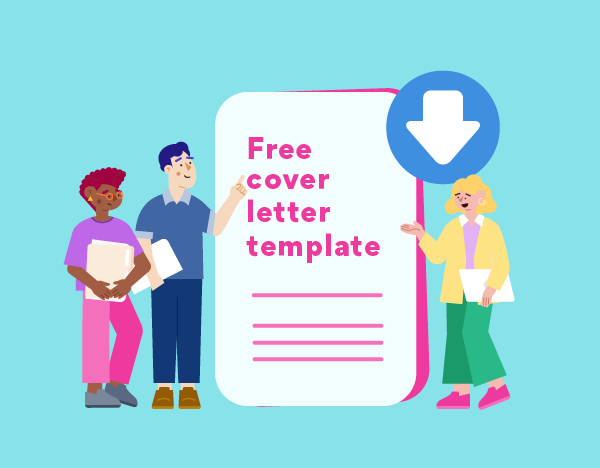
Free cover letter template
A cover letter is all about making a great first impression and giving your job application the best chance of making progress. A well-written cover letter will encourage a potential employer to read through to your resumé and get in touch to find out more or set up an interview.
We’ve come up with a template to help you get this all down on paper. Use it as your starting point and you’ll be on track to a great cover letter that will get your application noticed.
Remember, this is just a basic outline of the information to include, so make it your own by including skills and experience specific to you.
Download our free cover letter template
Download cover letter template
Think of your cover letter as a pitch – a way to introduce yourself professionally and show the value you could bring to the role you’re applying for. Your resumé is there to document your skills, experience, and achievements, but your cover letter sums these things up in a way that speaks to the job and offers a sense of who you are.
It’s also your chance to show why you’re interested in the particular role, and that you’ve done your research about the company or organisation.
You can tailor the cover letter to you and the job you’re applying for, by explaining:
- why you’re interested in that role
- what the most relevant skills and experience you could bring to it.
“I’m starting out my career in…"
You want to open your cover letter by giving the reader a sense of who you are and why you’re interested in the role.
Alternatively, you could pick an element of the role or field that is exciting and start on that.
Don’t be afraid to vary from the standard opening line by using these first sentences to introduce yourself and your skills in a more personal and unique way.
You might write an opening that explains where you’re at in your career, and where you’re aiming for next. Or perhaps you’d like to emphasise a particular aspect of the job or field of work that appeals to you, and relate it back to the skills or attributes required for the role. For example:
- “ I’ve committed myself to building skills in <aspect of the job> and <another aspect > throughout my work as an <your current role> . Now, I’m ready to take the next step in my career. The <job title> role at <company name> would allow me to contribute my skills to the <team name> team, and in doing so, help <company name> to succeed in <what the company does> .”
- “ Providing patient-centred care has grown to become my key focus as I establish my nursing career. I’m passionate about ensuring dignity and respect, and that’s why this role as Graduate Nurse at Smith Hospital appeals so greatly to me .”

"<Company name> has been of interest to me since …"
By showing your genuine interest and enthusiasm in this role and the business, you’re showing the reader why you’re interested and that you’ve done your research.
This is your time to shine with the knowledge you have about the business, what you admire or like and where you think you fit or can help them achieving their business goals.
"I welcome the opportunity…"
This final section of the cover letter should sum up your enthusiasm for the role and how you believe you can make a contribution to both the role and the business. It’s also an opportunity to suggest next steps in the process and thank the reader for their time.
Once you’ve used the template to create your own cover letter, come back to it with fresh eyes and ensure there are no errors or things you’ve missed. Try reading it aloud, or better yet, have someone you trust look over it to give you feedback.
Ultimately, you want to make your cover letter as compelling as possible, to capture the reader’s attention then make them want to get in contact with you. And the best way to do that is to make sure it’s a true reflection of you as a person and what you’ve achieved.
Discover what roles are right for you and the job opportunities available, with our explore careers tool .
Read more
Cover letters: the good and the bad, 7 cover letter openers to land you an interview, 8 things to cut from your cover letter.
Cover letters
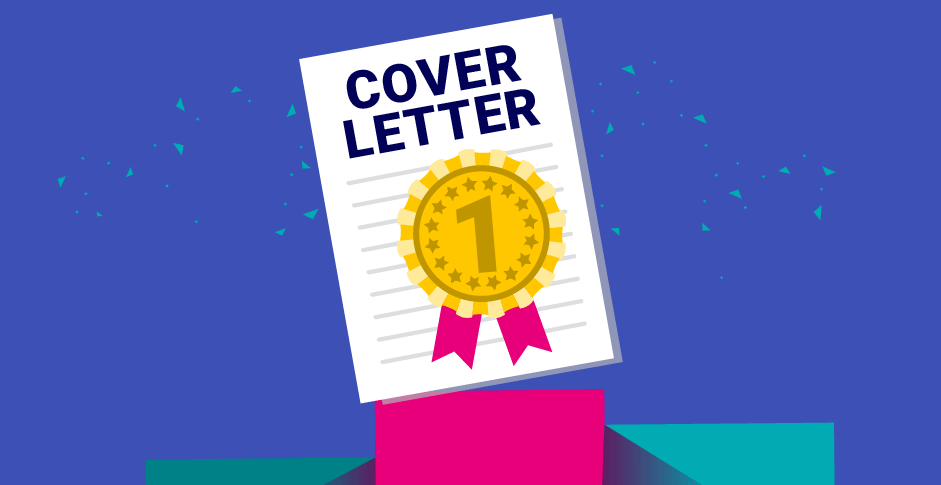
3.5 min read
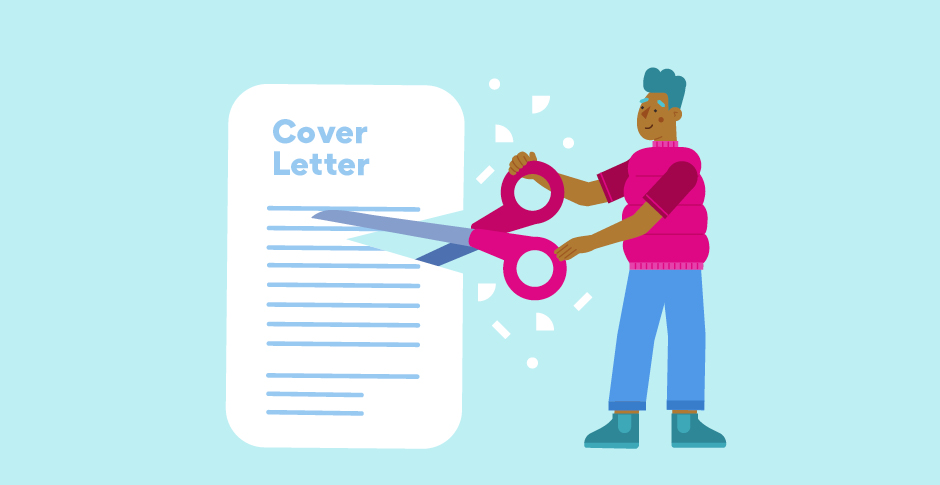
Infographic
- Cover Letter
How to write a cover letter: (NZ) tips & examples
At cvapp.nz , we know writing cover letters isn't always easy. In fact, cover letter writing can be downright intimidating – that’s why we’re here to help!
In this guide, we’ll walk you through our top tips and tricks for creating a killer cover letter that will make hiring managers and potential employers excited to learn more about you.
Regardless of whether you're applying for a graduate job or an executive position, we'll cover everything you need to know, including:
- How to effectively write a cover letter
- Why cover letters are so important
- Tips on crafting an effective opening
- Guidance for writing your cover letter
- How to wrap things up in a compelling way
- Common cover letter mistakes to avoid
Why do we need a cover letter, anyway?
Writing a cover letter allows job seekers to showcase their unique professional backgrounds and express their passion for the position they are applying for. Unlike CVs, which are limited by bullet points and standardised formatting, cover letters give candidates the freedom to present themselves in their own words.
What sets great cover letters apart is how well they convey the "why" behind the candidate's application. A great cover letter can give hiring managers and potential employers insight into the motivations, values, and aspirations that drive a candidate's career path. By sharing their story in a free-flowing format, applicants can capture the attention of a hiring manager and demonstrate why they are the perfect fit for the job.
At cvapp.nz , we’ve helped millions of professionals land their dream job roles and find their way to professional success. We’ve created this guide to help you create an effective, engaging cover letter – let’s get started!
How to format an effective cover letter:
Formatting plays a critical role in the development of writing a great cover letter. A well-structured cover letter includes different sections, each serving a specific purpose:
- Header: This section contains your contact information, such as your name, phone number, and email address. It may also include the date and the employer's contact details. The header ensures that your cover letter looks professional and provides an easy reference for the hiring manager to reach out to you.
- Greeting: Also known as the salutation, the greeting directly addresses the hiring manager or the relevant party who will be reading your cover letter. Whenever possible, use the name of the person (e.g., Dear Ms. Kawiti). If you're unable to find a name, a general greeting like "Dear Hiring Manager" is a suitable alternative.
- Introduction: The introductory paragraph is your first chance to grab the reader's attention. Here, you briefly explain who you are, the position you are applying for, and how you learned about the opportunity. It should be engaging and concise, setting the tone for the rest of the letter.
- Body Paragraphs: Typically one to two paragraphs, this section is where you dive deeper into your qualifications, experiences, and skills that make you the right fit for the job. Link your abilities to the job description, providing concrete examples of how you've achieved success in previous roles. Your goal here is to illustrate your value and potential contribution to the potential employer.
- Conclusion: Your closing paragraph should summarise your interest in the position and reiterate why you would be a great fit. It's also the best place to thank the employer for considering your application and to include a call-to-action statement, such as expressing your desire to discuss your application in greater detail in an interview. Finally, sign off professionally with a closing such as "Sincerely,” "Best regards," or “Ngā mihi nui,” followed by your full name.
Remember, each part of your cover letter should be crafted to support the main objective: convincing the employer that you are an ideal candidate worth interviewing. We’ll explore each of these sections and help you put your best foot forward.
Cover letters are your professional secret weapon
A well-crafted cover letter can be a valuable addition to a job application, particularly when job seekers are facing tight competition and competing with other applicants for the role.
While a CV can concisely summarise an applicant's qualifications and experience, a cover letter can provide more comprehensive context to the applicant's background, highlight their unique strengths, and allow them to connect personally with the hiring manager. It's definitely worth taking the time to include a cover letter whenever possible unless it's explicitly discouraged in the job description. Think of cover letters as your professional secret weapon!
How do I write a cover letter?
To start writing your cover letter, you'll need three key components: the header, greeting, and introduction, each of which plays a unique role. In this guide, we'll explore how to write a cover letter that both engages and impresses employers.
If you're feeling daunted by a blank page, don't worry: you're not alone! When it comes to starting a cover letter, you might be wondering: What should I include in the header section? How should I introduce myself in the greeting? What details should I touch on in the introduction? What tone should I strike? And how do I ensure it matches the job description?
We’ll address all of these questions and more, so you can nail that cover letter and showcase your skills and experience in the best light. With our cvapp.nz cover letters and guides, we’ll help you make the most memorable impression possible.
H3 Start off strong with an impressive cover letter header
It's important to make it easy for potential employers to invite you for an interview. To do that, you'll want to include essential contact information in the header of your cover letter, including your full name, phone number, email, and even your LinkedIn profile if requested or appropriate.
The header can create an impression of professionalism and ease for the reader as they take in the message of your letter. So don't overlook these small details that can make a big difference!
Samuel Te Aho
[email protected]
3404 Rangiriri Ave
Hamilton 3206
December 11, 2023
Mr. Rob Manihera
Kirkiriroa Krafts
82 Ruru Pl
Our quick guide to greetings
To begin with, it’s important to understand that the way you start your letter sets the tone for the entire cover letter. Therefore, it's essential to be mindful of the recipient's expectations and preferences. If you are applying for a job and addressing an individual, you can use a greeting like "Dear Mr. Smith" to show respect and personalise the letter.
On the other hand, if you are unsure of who the specific recipient is, you can use "Dear Hiring Team" or "Dear Company X" to stay professional while addressing the company as a whole.
When crafting a greeting, you should consider the culture of the company and try to adapt your tone accordingly. For example, some businesses may appreciate a more formal tone, while others may appreciate a more casual approach. You can gather some clues about the culture of the company by visiting their website or social media profiles and taking note of the language and tone they use to communicate with their audience.
Adapting your greeting to match the tone of voice and culture of the employer is a great way to create a good first impression. Taking the time to personalise your message shows that you did your research and are genuinely interested in the role you are applying for!
Writing a cover letter introduction
After the greeting, the first paragraph is where the real work begins. Is your cover letter introduction up to the task of competing for this job? Capture the attention of potential employers with a brief yet intriguing hook that leaves them wanting more. Amp up their interest by highlighting a noteworthy achievement with an impressive figure, dropping the name of a prestigious employer, or mentioning a well-deserved accolade.
Most importantly, ensure that your introduction is relevant to the position you're after. You want to make them eager to read further. While your career is much more than just a single sentence, it's essential to kick things off with an impactful opener that sets the tone for your entire application.
The cover letter's opening paragraph should leave the employer wanting to hear more, whether by revealing a personal anecdote, showcasing your experience, or recounting a game-changing contribution. Get creative!
Tēnā koe, Mr. Manihera
After a rewarding eleven-year journey in the retail industry, I am thrilled to apply for the sales assistant position at Kirikiroa Krafts. With a genuine enthusiasm for connecting with others, resolving challenges, and maximising efficiency, I strongly believe that my extensive sales experience and passion for providing customers with top-notch customer service can make a significant impact on Kirikiroa Krafts' success. I’d love the opportunity to help propel Kirikiroa Krafts to new heights.
Here’s another great cover letter introduction from our academic cover letter example . Notice how the example below has been customised to align with the job description and incorporates relevant keywords.
It provides essential information, including the candidate's present title and the position they are seeking, as well as their primary reason for applying to the job:
“Becoming a part-time MBA lecturer at Massey University is an idea that invigorates, energises and enthuses me. After six remarkable years of teaching Commercial Law and Information Systems at The University of Auckland, I am now interested in consolidating my career in academia at another fantastic institution. In addition to many years of teaching at The University of Auckland, I have recently published a series of research papers that investigates how culture impacts business in a New Zealand context. It has been one of my most rewarding academic endeavours to date.”
Cover letter body paragraphs
When crafting the body paragraphs of your cover letter, it's essential to focus on the role requirements and convey how your experience makes you an excellent fit for the position. To do this, you'll need to be specific and use examples that demonstrate your skills and accomplishments. Using numbers, stats, and figures is the best way to do this. Remember to be confident and assertive but also concise and to-the-point.
To showcase your credentials effectively, bullet points can be a powerful tool, allowing you to highlight your achievements and skills in an organised and easily digestible way. Additionally, using bold fonts strategically can draw attention to essential sections of your cover letter and make it easier for potential employers to navigate.
We have some great examples of how to achieve this with our cvapp.nz cover letter templates – check them out in our cover letter builder!
One thing to keep in mind, though, is that walls of text can be overwhelming, so it's vital to break your cover letter up into shorter paragraphs and use white space effectively.
Remember, your main goal is to make a great impression and convince potential employers that you're the best candidate for the job. So, choose your words and examples carefully and tailor your cover letter for each application.
I am currently studying at the University of Canterbury and pursuing a Bachelor's degree in Commerce. I'd love to gain hands-on, practical experience in the retail industry, and I believe that a part-time position at Mallory's Designs aligns perfectly with my schedule, allowing me to balance my commitment to education while applying my knowledge in a real-world setting.
Throughout my academic journey, I have developed a strong understanding of business principles and their practical application in the retail sector. I have also gained valuable insights into consumer behaviour, marketing strategies, and inventory management. I believe that these skills, combined with my enthusiasm for creating exceptional customer experiences, would make me a perfect fit for the Retail Assistant role at Mallory's Designs.
Spotlight your professional skills
A successful cover letter should focus on your accomplishments rather than just listing your duties and responsibilities.
To make your accomplishments stand out, it's essential to choose the most relevant stories to tell and elaborate on them during the interview. You should also provide context and a timeline for your achievements, highlighting the specific tasks you completed and the outcomes that resulted from them.
Using powerful action verbs to demonstrate your skills can also be a critical tool in crafting an impactful cover letter. To structure your accomplishments effectively, you might consider breaking them down into three parts: the action verb, the specific task you completed, and the quantifiable outcome for your company.
Your cover letter should include a wide range of skills, including any relevant hard skills , interpersonal skills and technical skills . Be sure to review the job description thoroughly so you know what type of skills employers are looking for!
Remember: When writing a cover letter, it's essential to focus on your achievements, highlight your skills using powerful action verbs, and choose only the most relevant accomplishments to share.
With these tips in mind and our cvapp.nz tools and resources, you'll be sure to craft a persuasive cover letter that sets you apart from other candidates. Check out our retail cover letter example for more inspiration:
Furthermore, I have strong communication and interpersonal skills, which enable me to connect with customers effectively. All of my previous job roles, as outlined in my CV, have been in the retail sector, and I genuinely enjoy helping others. I thrive in team-oriented environments, and I'm a quick learner who is eager to contribute and grow within a dynamic retail setting. Mallory's Designs has built a solid reputation in the Timaru community for its innovative and high-quality products, and I am inspired by the company's commitment to providing exceptional customer service.
Closing your cover letter with an effective conclusion
Your conclusion is just as important as the introduction and the middle paragraphs, as it contains your call-to-action. Rather than ending on a dull note, be sure to put thought into how you end your cover letter.
It’s important to get the tone right to leave a positive impression on the hiring manager. Consider how you want the hiring manager to feel after reading your cover letter, and don't be afraid to express your excitement and enthusiasm about the possibility of an interview.
When it comes to closings and sign-offs, there are other options besides "sincerely" or "best regards". It's important to choose a closing that fits the tone and characteristics you’ve highlighted in your application.
Consider describing how your personal characteristics align with the role you're applying for, such as being a committed team player or a meticulous planner. Try painting a picture of what it's like to work with you to show off your personal approach and compassion.
Remember that your conclusion is your final chance to showcase your personal characteristics and leave a lasting impression on potential employers. Keep it polite, upbeat and professional – and you’re ready to export your files and start sharing your cover letter with the world!
I hope to speak with you soon and that you enjoy my media portfolio. If you have any questions, please do not hesitate to let me know. Thank you for your time and consideration. I hope to become an intern with Two River Media Group and demonstrate the power of creative ideas with your team.
Maui Alexander
Key takeaways
Here at cvapp.nz, we want to make the job search process as easy as possible. With over 50 cover letter examples and an easy-to-use cover letter builder , we’re passionate about providing Kiwi professionals with the tools and resources to help make their applications stand out from the crowd. We want our users to have the best chance of landing their dream job with polished, professional CVs and cover letters.
Our team of career experts have curated a wide range of professional tips and helpful articles that can guide you through the job search process and make sure you're presenting yourself in the best possible light. We understand that the job search can be overwhelming, and we're here to help you every step of the way.
Whether you're a seasoned professional or just starting out in your career, Cvapp.nz has everything you need to put your best foot forward and make an excellent impression with employers. So what are you waiting for? Start creating your standout cover letter today and unlock your next professional chapter.
Wishing you the very best of luck!

- NZ AU SG HK CN
- Search Jobs
- Contracting FAQs
- Web timesheets and resources
- Job interviews
- Psychometric testing
- Leadership development resources
- Insights – The Blog
- Hudson Career
- Accounting & Finance
- Business Support & Contact Centre
- Engineering
- Human Resources
- Marketing & Communications
- Policy & Program
- Risk & Compliance
- Technology & Digital
- Frontline Recruitment
- Graduate Recruitment
- Psychometric Assessment
- Scaleup by Hudson Blog
- Outplacement & redeployment
- Career transition
- Navigate change
- Realign capability
- Mobilise careers
- Coaching For Your Team
- Hire Now, Pay Later Solution
- flexhive – temporary staffing solutions
- Hellomonday – people development & coaching
- Hudson Executive – top-tier recruitment
- JobAccelerator – Career Transition & Outplacement
- Sapia – AI Smart Chat Interviewing
- scaleup – volume & graduate recruitment
- About the Hudson group
Resumes & cover letters: Cover letter templates

A cover letter is often your first communication with a potential employer, and therefore it is vital that when writing a cover letter you make it compelling and professional from the very first line, marking you out as a candidate they need to contact.
A good cover letter is an opportunity to showcase your written communication skills and your motivation for applying for the role. Writing a cover letter customised to the job demonstrates you have taken the time to put some effort into your application. You can also use a cover letter as an opportunity to highlight and provide more detail on any specific skills or experience which are relevant to the role you are applying for.
To help you structure your cover letter, we’ve developed 4 free cover letter templates and cover letter samples you can use to write a cover letter that will catch the eye of hiring managers and recruiters and increase your chances of getting an interview. For additional tips and advice on cover letter writing, check out our article How to write a cover letter .
Download our free cover letter templates
Cover letter template 1: response to a job ad, cover letter template 2: response to a job ad, cover letter template 3: letter to a recruiter on linkedin, cover letter template 4: ‘cold contact’ prospecting letter to a hiring manager, related insights.
Hudson recently decentralised its activity to better serve each employer’s requirements - with one objective in mind: get the job to be done.
Wed 01 Feb, 12am

Hiring: Managing workplace culture in the time of COVID-19
Culture and engagement are critical factors in driving organisational performance, and yet they have had to be re-invented during the COVID-19 disruptions. The hip office, workplace drinks, onsite gym and days off for birthdays, plus the casual banter around the water cooler: these are all aspects of work which go into creating a cohesive and…
Wed 16 Dec, 03pm
- Tips for nailing your CV
- Writing the perfect cover letter
- Searching for jobs
- Landing your first job
- Effective interviewing
- Your online presence
- Workplace tips & wellbeing
- Changing careers
- Growing your skills
- Managing job loss
- Taking leave
- Market updates
- Newshub Summer Series
- Careers advice
How to start a cover letter: 6 attention grabbing intros + examples
A good cover letter intro is like a good espresso – short, sharp and energising. Here’s how to brew one of your own.

What you’ll learn:
- The contact information you should include in a cover letter
- The best greeting to use in a cover letter
- Attention-grabbing ways to start an NZ cover letter
A cover letter is your chance to prove you’re the perfect candidate for the role, and a vital step towards clinching that all important interview.
But this won’t happen if the reader doesn’t get past the first sentence. Your opener needs to grab their attention, and make them hungry to find out more.
Today, we’re going to answer your questions by exploring how to start a cover letter, NZ style. We’ll look at greetings, what to do when there’s no name in the job ad and some different approaches you can adopt. As well as examples, we’ve also included a download link for some free cover letter templates that you can take and use in your own job applications.

Will your readers fall at the first sentence?
What contact information should you include on your cover letter?
The first things you’ll see on a cover letter are the names and contact details information for both the intended reader, and yourself. These should be formatted like a letter (as in the old timey paper things we used to send before we had emails). If this doesn’t make sense, you can check out the templates linked above to see what we mean.
At the top left of the cover letter, you should include:
- The manager's name
- The manager’s job title
- The company name
- The physical address from the company
At the top right, you should include:
- Your full name
- Your email address
- Your phone number
What is the best greeting for a cover letter?
Before you start working your wordsmith magic, you need to say hello … the right way.
You may see this section referred to as a ‘cover letter salutation’, but we’ll stick with ‘greeting’, because we aren’t from the Middle Ages. The ideal cover letter greeting looks like this:
- “Dear James Webster,”
Use ‘Dear’, because it’s a formal letter, and address it to the recruiter or hiring manager by using their full name. This is often included in the job listing, or can usually be found easily by stalking the company website.
How to start a cover letter without a name
We recommend putting serious time into finding a name when addressing your cover letter – this tiny bit of personalisation goes a long way.
Even if you’re not 100% sure it’s right, no one will penalise you for addressing the letter to the head of the department the role sits within. If you’re applying to a really small business, you could even go with the owner – it shows you tried.
Failing all of this, the next best option is, ‘Dear Hiring Manager’. While it lacks the personal touch, this greeting works because it’s basically invisible. It’s not as cold as ‘To whom it may concern’ (avoid this at all costs), and not overly informal like, ‘Hi there’.
Attention grabbing ways to start a cover letter
None of the below examples are better than the others, we just gave you a choice to fit your personal style, and the type of role you’re applying for.
1. Being energetic from the get-go
Enthusiasm for the role and/or company always goes down well. While it’s important not to come across as fake, when done well, this intro can really help you stand out .
“I was hugely excited to see the assistant restaurant manager role you’re listing on Trade Me Jobs. I’m an experienced head waiter, with a track record of effective leadership and a passion for delivering great customer experiences. What’s more, I’ve been a loyal customer of yours for years, and would love to join your team!”

Try adding some extra energy into your cover letter opener.
2. Leading with your values
While some careers (think doctors, teachers and charity workers) are considered ‘callings’, personal values are becoming increasingly important across New Zealand’s job market.
If you think it’s appropriate, a value-led cover letter can be highly memorable.
“Businesses should take climate change seriously. As a software engineering graduate with a passion for sustainability, I believe technology is key to making the commercial sector greener. Your reputation for pioneering this technology, and partnering with businesses to implement it, excites me, and I’d love to become part of your mission.”
3. Targeting an achievement
Evidence-backed success stories grab the reader’s attention, and get them thinking about the improvements you could make to their company. The trick here is to get your message over without appearing arrogant.
“In the last 18 months, I’ve beaten my quarterly sales target by a minimum of X%, every time. In total, this has brought in an additional $XX,XXX of revenue for the business. I’d love to bring this track record, and my passion for customer service, to the Sales Manager position listed on Trade Me Jobs.”

Highlighting a professional achievement can be a strong way to start your cover letter.
4. Mentioning a contact
If someone within the company recommended you apply for the job, make sure the hiring manager knows. Why? They see hundreds of applications a day, and if yours is backed by someone who’s already landed a job at the company, that means something.
“I was excited to learn about the Social Media Manager role from my former colleague, Lauren Irvine. She and I worked together running digital and social campaigns for a wide variety of companies at BUSINESS NAME. She thought my skills and personality would be a good match for your team.”
Another way to make your application easy for the hiring manager is by including a link to your online job profile , or portfolio of work. Today, employers often want to check out your digital presence, and this platform lets them build a better picture of you by viewing your skills and experience at the click of a button.
5. Expressing passion for what you do
Employers aren’t interested in someone who’s just turning up to earn a salary. They want to hire an employee who’s passionate about what their organisation does, and will bring this energy to work every day. Your cover letter is a great place to get this dedication across, as long as you get the tone right. Too gushy, and the reader might think you’re being disingenuous, too laid back and they might not feel the passion coming through.
Example:
“I’ve been passionate about conservation since my parents took me on a whale watching tour as a child. Throughout my schooling and career since then, I’ve been focussed on finding a role that allows me to help protect the wonderful marine wildlife we have here in New Zealand.”
6. Starting with a statement of belief
Of course, if you have particularly controversial views on the topic you want to make a statement about, it might be better to keep them to yourself at this early point in the application process. However, there are ways you can use this intro technique to demonstrate a grasp of current issues within your profession, and also your enthusiasm for the work.
“We need to end the stigma around seeking help for mental health issues. As a counsellor, I strive to provide an environment in which people feel comfortable to talk about the challenges they face, regardless of their background or their concerns about receiving counselling.”
Other articles you might like
Along with your CV, a cover letter is essential to any NZ job application. Let's get you started.
Done right, your CV can be a powerful tool for helping you stand out from other candidates. Here, we’ll show you how.
A good CV can make all the difference to your job hunting hopes. Check out our must-read advice and free templates.

- List an item
- My Trade Me
- Marketplace
- Latest deals
- Closing soon
- Browse categories
- Salary guide
- Advertisers advice
- Boats & marine
- Other vehicles
- International property
- News & guides
- Homes.co.nz
- OneHub for agents
- Domestic services
- Events & entertainment
- Health & wellbeing
- Announcements
- Trust & safety
- Seller information
- Desktop site
- Privacy policy
- Terms & conditions
- Follow Trade Me on Facebook
- Follow Trade Me on Twitter

How To Write a Cover Letter With Examples

Cover letters can help differentiate you from other job applicants and be the determining factor of landing your dream job. By taking the time to craft a custom cover letter, a single sheet of paper can help communicate all the human elements that a resume may fall short of capturing about yourself.
But what do employers and recruiters have to say about how to write a cover letter? What are the best tips they have to offer for graduate students who are writing a cover letter?
We asked 11 employers for their best cover letter tips. Here is what they had to share.
Let it Set the Stage
In many ways, cover letters should provide background information and context to your resume, while simultaneously addressing how that resume addresses the specific requirements of the job opportunity. The cover letter is your opportunity to "set the stage" and to convince the hiring manager why your specific set of skills, experiences and interests will provide value to their team and its objectives.
Andrew Horrigan '11 BSBA (Management Information Systems), Product Manager at Cisco
Research the Hiring Manager
If possible, find out who the hiring manager is and look them up on LinkedIn. Do your research on the company you're applying for. What's their mission statement and how do they portray their company culture? Hopefully what you're looking for in a job is reflected by those things. Make sure the hiring manager knows that and understands who you are and what drives you. A resume is often about as robotic as things can be. Make sure your cover letter is the opposite—personalize it and let yourself shine through.
Joshua Schlag ’05 BS (Computer Science) ’11 MBA, Digital Marketing Manager at Pyramid Analytics
Utilize Career Development Resources
The University of Arizona and Eller College of Management go to great lengths to make sure students are prepared for their impending career journey. Because cover letters are so important to getting your foot in the door, there are several career development resources online and on campus to take advantage of. The university’s cover letter builder serves as a nice template to get started. And of course, it never hurts to make an appointment with an Eller Career Coach through eSMS to have a professional review your letter before submission.
Brett Farmiloe, ’06 BSBA (Accounting), Founder, Featured
Discover Past Samples of the Position
Do your research on the company and personalize your cover letter to the role for which you are applying. Don't be afraid to Google, "How to write a good cover letter for X position." Seriously, it helps! There is so much information out there from various perspectives—applicants, hiring managers, etc. Most importantly be yourself and let your personality come through. And don't forget to spell check!
Mariam Nikola '17 MS MIS, Consultant at Point B
Highlight Your Soft Skills
When writing a professional cover letter, there are a couple things you can do to set yourself apart from the pack. First, make sure you tailor your letter to the specific position you are applying for. This should not be a general, "one size fits all" letter—be sure to discuss specific details surrounding the role or the company itself. Secondly, this is an opportunity for you to show a little bit of your personality. Obviously, you want to remain professional, but this is a great time to highlight some of your soft skills that might not be fully conveyed through your resume.
Brian Ellis ’17 BSBA (Management), Staffing Manager at Randstad Office and Administrative Professionals
Fill in the “Why” Gaps
As a talent advisor, I review a lot of applicants and agree that a cover letter can be a great way to stand apart, if it is done correctly. A great cover letter for me covers the ‘why’ that I cannot understand from just a resume alone. It should clearly state why you are interested in the role, what your goals are for utilizing your graduate degree (if recently graduated) and explain any career pivots reflected on your resume. If you answer those questions in a direct, concise manner it will add value to your application.
Monica Larson , ’11 BSBA (Marketing) ‘20 MBA, Talent Advisor
Tell Your Story
A cover letter is your opportunity to tell your story—tying your experience and personal interests into why you want a position and why you are the best candidate for it. Paint the picture of your journey and what about the position excites you personally and professionally. Similar to your resume, keep it short and sweet. No need to repeat what’s already on your resume. Recruiters and hiring managers don’t have time to comb through a novel, so you need to engage them with as few words as possible while also grabbing their attention.
Kelly Castoro, ’06 BA (Spanish, Portuguese), Project Manager at Squarespace
Tailor Each Cover Letter to the Position You Are Applying
Be sure to research the role and customize your cover letter for each position, relating your experience to the particular role you are applying for. Personalization is key—research who you are sending the cover letter to and address the letter to them directly. End your letter with a call to action, stating you will follow up by phone or email if you haven’t heard from anyone. Follow ups are very important!
Jessica Rosenzweig, ’15 BSBA (Business Management), Account Manager at PeopleWare Staffing
Communicate Bankability and Personality
Your cover letter answers two crucial questions; are you bankable and are you someone the company will enjoy working with? Communicate bankability with your knowledge of the company, industry and why your skills, capabilities and interests are a great fit. Share your passion for their mission, culture, brand—whatever excites you about becoming a member of their team.
When conveyed through a concise, well-formulated, well-worded cover letter, you demonstrate the ability to write an effective business case—communicating that you are a ready professional and worthy teammate who will hit the ground running.
Theresa L Garcia, ’83 BSBA (Human Resources), Senior Change Management and Organization Capability Consultant at Boeing
Keep it Concise but Compelling
A cover letter is your chance to speak directly to the hiring team and tell them why you are not only the best match for the position for which you are applying but also give them additional insight into yourself as an individual that is less visible from your experience.
A great cover letter should be attention grabbing and touch upon the qualities that make you stand out from others in the applicant pool, highlight both your recent and most distinguished accomplishments and drive home why you are the right person for the job. Professionalism is always important, but don’t be hesitant to put your voice into the letter to let your personality shine through. Research the company, understand where they currently are, where they are going and show why you are the right person to get them from point A to point B. Recruiters spend a lot of time reviewing applicants and making yourself stand apart from the crowd is key. Keep it concise but compelling!
Matt Reineberg, ’14 BSBA (Marketing), Senior Talent Acquisition Sourcer at Cox Enterprises
Highlight the “Why”
Why are you applying to this company? Why do you want this position? Your cover letter should aim to answer the why behind applying for the job. Conveying an interest and excitement for working specifically for this job at this company, rather than a desire to get any job anywhere that will give you money, can go a long way. Show the company that they should hire you and your passion over someone that might have the skills needed for the job, but doesn’t care about the work as much as you do.
Ryan Nouis, Trupath
Ready to Learn More?

COMMENTS
To make your cover letter look good: use a black, easy to read font in one size. use simple language and be warm and friendly. use positive phrases like 'I have' and 'I can'. use bullet points to list information. avoid weak words like 'some knowledge' or 'fairly experienced'. avoid starting each sentence with 'I'. avoid repeating your whole CV.
1. Your contact info, the date and the business' address. At the top of your cover letter should be: Your full name, contact details and home address. The date you submit the application. The business' postal address. It should look like this: Head up your cover letter like this. 2.
Quick tips for improving your cover letter. Use clear, concise language. It's best to avoid complicated or flowery wording. Avoid overly long sentences. Try reading it aloud to see if there are any you struggle with. Always tailor your cover letter to the job. An application is all about showing how you're a good fit for the role on offer ...
Address the cover letter to the right person, e.g., the hiring manager or recruiter. Be clear and concise. Have a structure in the letter - beginning, middle, end. Use active words to describe your work - accomplished, achieved, led, created, increased, identified. Finish with a call to action and ask for a meeting.
Simply sign off with: "I have attached my resume and look forward to speaking to you further about this opportunity.". Or "I look forward to hearing from you to discuss this role further." Finally, as you'll see in our cover letter template, you can close with the widely accepted "kind regards" or "sincerely".
The cover letter's opening paragraph should leave the employer wanting to hear more, whether by revealing a personal anecdote, showcasing your experience, or recounting a game-changing contribution. Get creative! Introduction & Greeting Customisable Example. Tēnā koe, Mr. Manihera.
Either way, knowing how to address a cover letter effectively can prevent you from ending your hiring chances before they even begin. When you know the hiring manager's name. More often than not, you'll be given the name of the hiring professional or the manager that you'll work for. Whoever it is, use their full name (first and last name) in ...
step 4: include a call to action. Your cover letter must finish on a strong call to action, encouraging the potential employer to look through your resume and to contact you to arrange an interview date/time. Here's an example of what and how to include a strong call to action at the end of a cover letter: "Please see attached my resume.
How to personalise your cover letter. In writing a cover letter, remember that it should never be generic - it should be personalised and tailored to the job and company that you are applying for. Have attention to detail. Scrutinise the job advertisement and ensure the details are exactly mirrored in your resume.
Step 3: Write your cover letter ACTION: Open the cover letter template in the job hunters' toolkit. Now you should have everything you need to write a great cover letter. The template and example will take you through this process. Before you start, take a minute to think about the goals of your cover letter.
Choose your best bits. The next step in writing a cover letter is to summarise your main skills and experience, condensing the most compelling parts of your resume and highlighting your skills as they relate to the specific requirements of the job ad. If you can show that you possess the exact skills, experience and qualities they're looking ...
Justified alignment looks neater and more professional. If you are using MS Word to write your cover letter, select the text and press "CTRL + J". Leave two line spaces between the date and the body of the letter. Leave one line space between paragraphs and do not indent for a more modern look.
To write a great cover letter, you need to know a bit about the job and the business or organisation you're applying to. Be concise. While a cover letter is part of your 'story', don't make it more than one page. Make it personal. Address the letter to the hiring manager or contact person for the job. Ideally use their name and job title.
Contact us. Call us for more support and information. We're here from 8:30am to 5pm Monday to Friday - except Wednesdays when we're here from 9.30am to 5pm. Use our interactive guides and templates to write a cover letter tailored to the job you want.
Download our free cover letter template. Think of your cover letter as a pitch - a way to introduce yourself professionally and show the value you could bring to the role you're applying for. Your resumé is there to document your skills, experience, and achievements, but your cover letter sums these things up in a way that speaks to the ...
Here are the most common ways to address a cover letter without a name: To Whom It May Concern. Dear Human Resources Director. Dear Hiring Manager. Dear Recruitment Manager. Additionally, if you want to add a personal touch, address your cover letter to your prospective department or manager.
The headline on the image says, "Cover letter format" A woman sits at a table writing on a piece of paper. There's a simple cover letter represented by lines. On one side of the cover letter, there are labels for the sections of the cover letter. The labels are: 1. Date and contact information 2. Salutation/greeting 3. First, introduce yourself 4.
The cover letter's opening paragraph should leave the employer wanting to hear more, whether by revealing a personal anecdote, showcasing your experience, or recounting a game-changing contribution. Get creative! Introduction & Greeting Customisable Example. Tēnā koe, Mr. Manihera.
Cover letter templates. Robert Half's cover letter examples and templates are designed to support you in finding and securing the perfect job. Whether your job application is submitted by mail or electronically, your cover letter is the first document that most employers read, and acts as a sort of appetiser to your resume.
Download our free cover letter templates. Cover letter template 1: Response to a job ad. Cover letter template 2: Response to a job ad. Cover letter template 3: Letter to a recruiter on LinkedIn. Cover letter template 4: 'Cold contact' prospecting letter to a hiring manager.
Attention grabbing ways to start a cover letter. None of the below examples are better than the others, we just gave you a choice to fit your personal style, and the type of role you're applying for. 1. Being energetic from the get-go. Enthusiasm for the role and/or company always goes down well.
Here's how to address a cover letter—. There's a right and wrong way. Way #1: The employer thinks, "This applicant's got a brain.". Way #2: She thinks, "Yuck. Another dud.". It's not rocket science. Just pick the right salutation and the right address cover letter format. In this guide, you'll learn: Who to address a cover ...
Here are five steps on how to address a cover letter without a name: 1. Remain gender neutral. The first step to addressing a cover letter without a name is to use gender-neutral identifiers. Deepti Sharma spent several years in the corporate world before following her entrepreneurial spirit and starting her business as a human resources (HR ...
Tailor Each Cover Letter to the Position You Are Applying. Be sure to research the role and customize your cover letter for each position, relating your experience to the particular role you are applying for. Personalization is key—research who you are sending the cover letter to and address the letter to them directly.